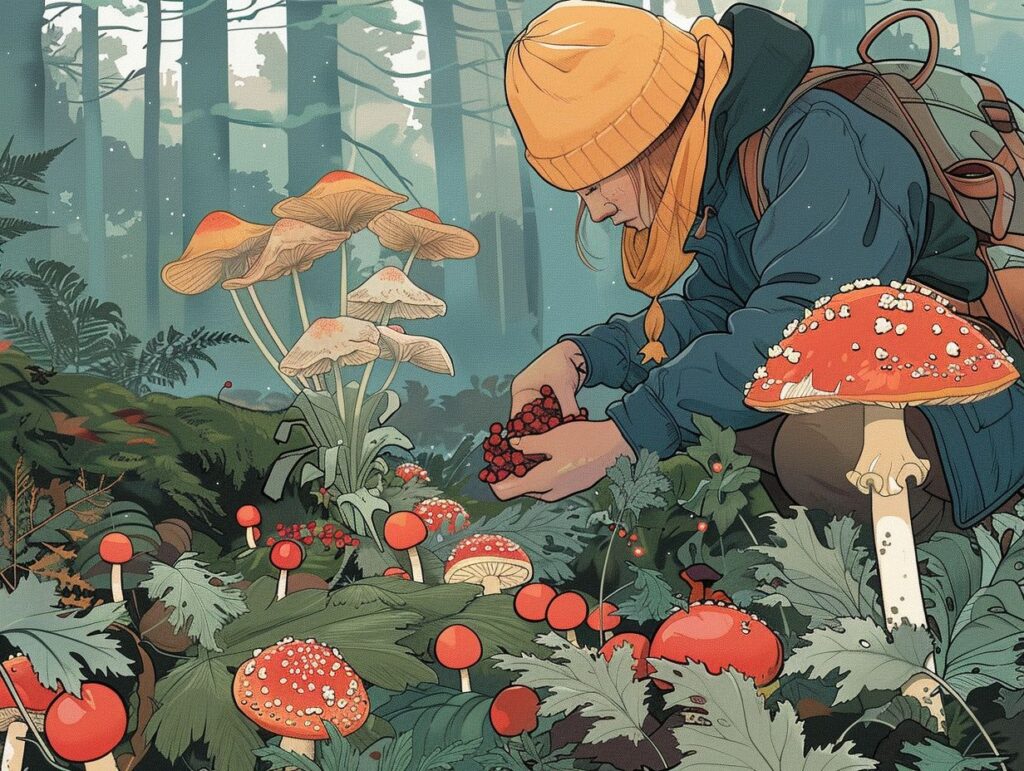Foraging while camping is a rewarding way to connect with nature and enjoy the fresh flavors of the wilderness. In this beginner’s guide, we will explore the benefits, risks, and legal considerations of foraging. We will also discuss the essential tools you need, the best plants, berries, and mushrooms to look for, and how to identify edible plants.
Discover the nutritional benefits of foraging, safety tips, and how to prepare and cook foraged foods while camping. Pack your bags and get ready to explore the bounties of the great outdoors!
Key Takeaways:
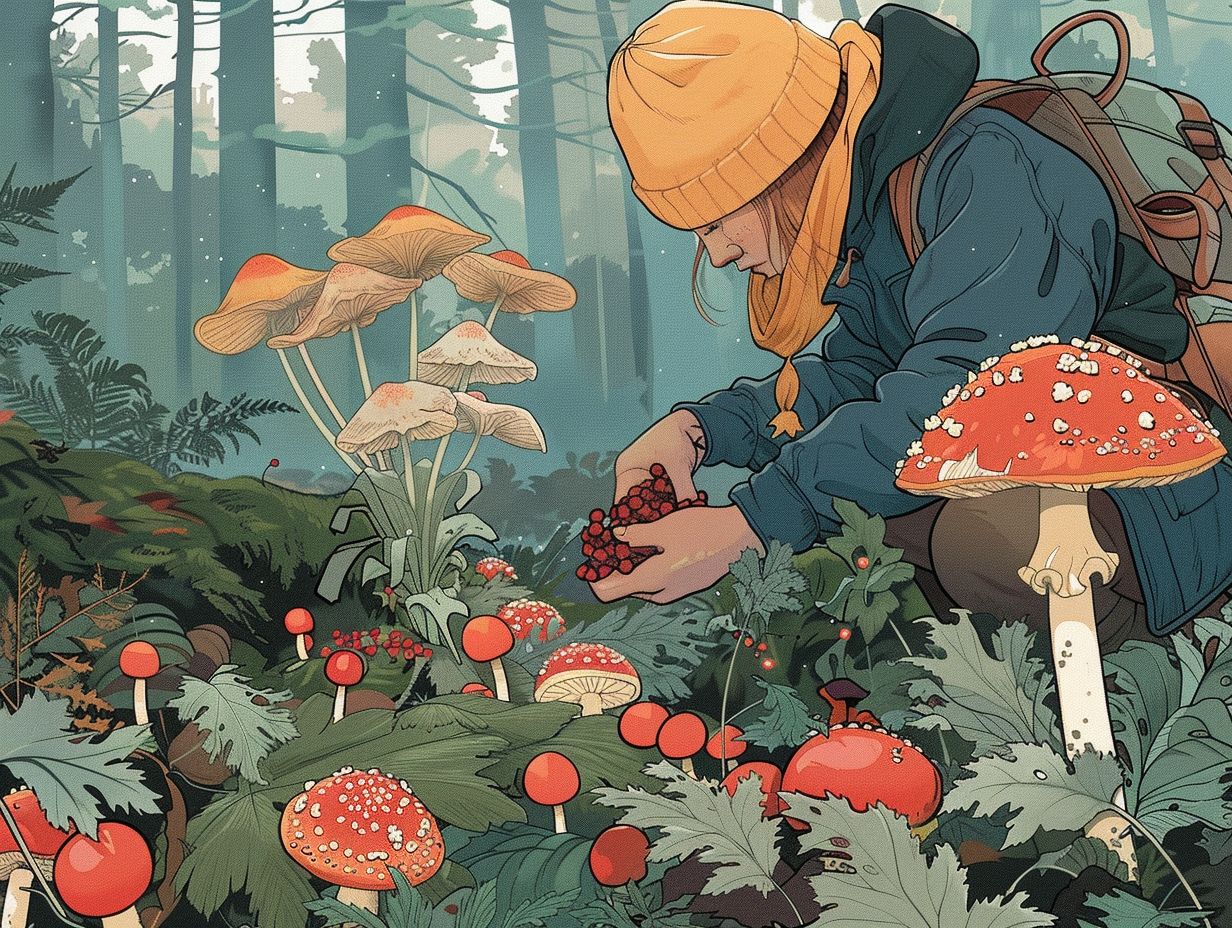
- Foraging while camping can provide numerous health benefits, including access to fresh and nutrient-rich foods.
- Before foraging, it is important to research and understand the legality and risks involved, as well as determine the best places and tools to use.
- Proper identification and preparation of foraged plants is crucial for safety. Some common and nutritious plants to forage while camping include berries, mushrooms, and edible greens.
What to Consider Before Foraging While Camping?
Ahead of commencing a foraging expedition during a camping trip, it is imperative to take into account several critical factors. These include:
- Ensuring safety
- Accurately identifying plants and fungi
- Considering seasonal availability
- Relying on a trustworthy foraging guide
Is Foraging Legal?
The legality of foraging is subject to regional variations, underscoring the importance of securing proper permissions before engaging in foraging activities on either public or private property.
It is imperative to consult local regulations and secure the necessary permissions as fundamental measures to guarantee the practice of responsible foraging. Upholding respect for the environment and the property rights of landowners not only constitutes a legal requirement but also serves as a means to cultivate positive relationships within the community.
By obtaining consent prior to foraging, individuals demonstrate reverence for the ecosystem and the proprietors or stewards of the land. Comprehending and abiding by the established rules and guidelines contribute to the conservation of natural habitats and promote sustainable foraging practices for the benefit of forthcoming generations.
What Are the Risks of Foraging?
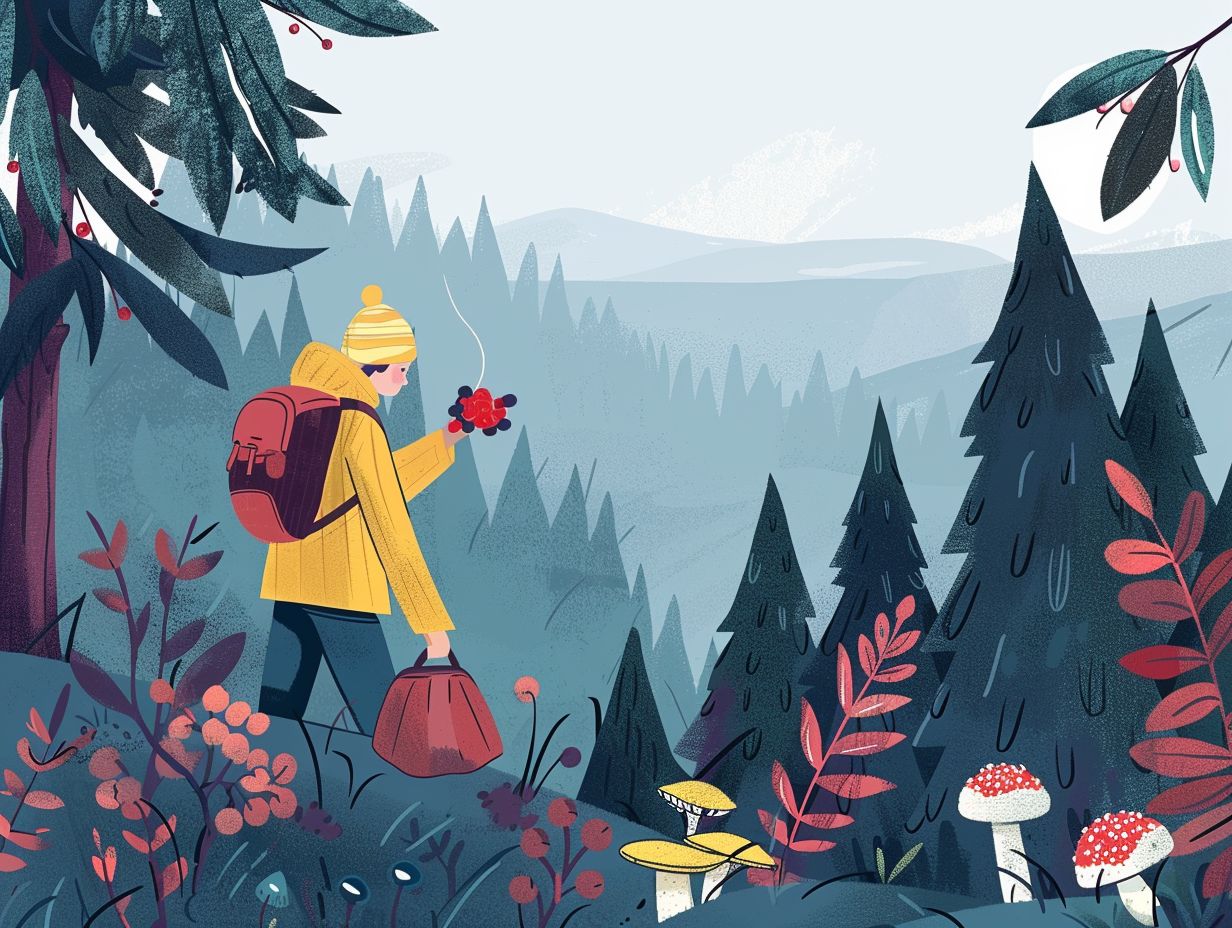
Foraging is not without its inherent risks, as it may entail the potential exposure to toxic plants and mushrooms, as well as contact with harmful pathogens.
The acquisition of proper identification skills stands as a critical requisite when embarking on the gathering of wild edibles, as mistakes in distinguishing a poisonous variety from a safe one could yield disastrous consequences.
The ability to discern between similar-looking species stands as the determiner between a delightful repast and a perilous encounter. The maintenance of food safety standards and adherence to good hygiene practices while foraging rank as paramount considerations.
Thoroughly washing one’s hands both before and after handling wild foods, coupled with the appropriate storage and cooking procedures, serve as preventive measures against contamination and subsequent illness. These practices are essential for safely indulging in the natural abundance offered by the landscape.
What Are the Best Places to Forage While Camping?
Woodland areas, such as those situated alongside the Shenandoah River and the Alleghany uplands, present optimal locations for foraging while engaged in camping activities.
The lush landscapes of these regions host a diverse array of wild edibles, including ramps, morel mushrooms, and wild berries such as blackberries and blueberries.
When engaging in foraging within wooded areas, it is advisable to remain vigilant for edible plant varieties like dandelion greens, nettles, and chickweed. Proper plant identification is crucial prior to consumption to mitigate potential risks.
Proficiency in discerning between toxic and non-toxic species is imperative. It is recommended to have a guidebook or enlist the expertise of a foraging professional to facilitate navigation of the terrain and identification of edible botanicals.
What Are the Essential Tools for Foraging While Camping?
Having the appropriate tools is paramount for a successful and secure foraging experience during camping. Essential items to have on hand include a reliable field guide, a torch for visibility, and suitable containers for collecting your findings.
What Are the Best Plants to Forage While Camping?
Some of the optimal plants for foraging during camping expeditions include recognisable species like the eastern redbud (Cercis canadensis), which can be readily identified with the assistance of a comprehensive guidebook.
Wild strawberries stand out as a popular choice among foragers due to their distinct trifoliate leaves and petite, flavoursome fruits. Dandelions also rank high as a common discovery thanks to their unmistakable yellow blossoms and nutritious edible foliage.
For individuals seeking to enhance their culinary experiences, wild garlic presents a viable option with its robust garlicky aroma. It is imperative to refer to a reputable guidebook while foraging to ensure precise plant identification and to prevent any potential encounters with harmful vegetation.
What Are the Best Berries to Forage While Camping?
Berries such as wild strawberries, blackberries, and blueberries are highly prized discoveries for foragers, especially when harvested during their respective seasons. Wild strawberries are commonly abundant in the early summer months, while blackberries and blueberries thrive later in the season.
It is crucial during berry picking to correctly identify each species to guarantee the selection of safe and edible fruit. Using field guides or seeking advice from experienced foragers can help in honing the skill to distinguish between different berry types.
It is important to stress environmental stewardship by only collecting what is needed, thereby preserving sufficient resources for wildlife and future foragers.
What Are the Best Mushrooms to Forage While Camping?
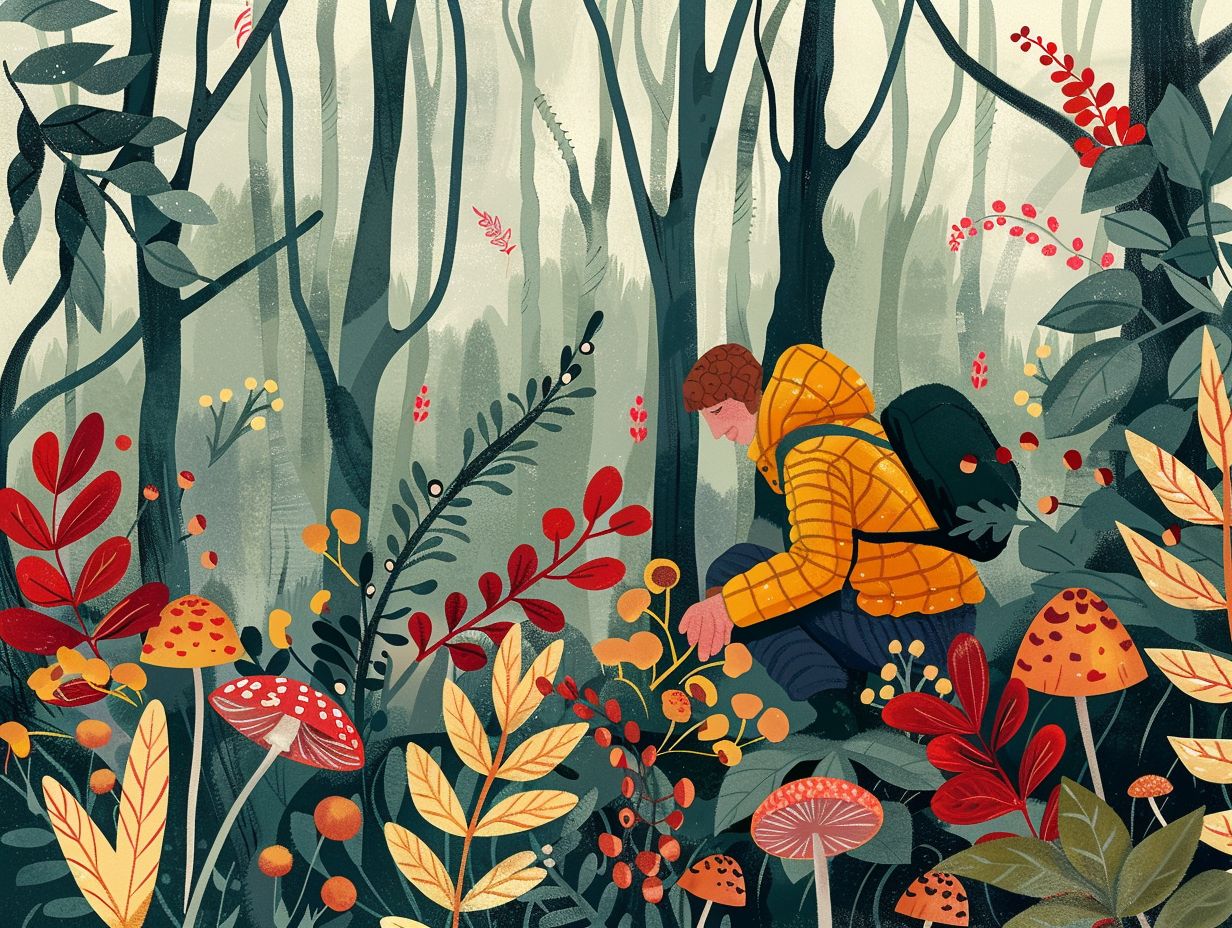
Morel mushrooms, chanterelles, and porcini are esteemed choices for foraging, assuming one possesses the requisite identification skills to discern these edible species from their toxic counterparts.
Morels are easily identified by their unique honeycomb-like caps and hollow interiors. Chanterelles are distinguishable by their trumpet-like shape and vivid orange hue. Porcini, known also as king boletes, feature a robust stem and a substantial, round cap.
Accurate identification is paramount in the foraging of wild mushrooms to avoid mistakenly ingesting poisonous varieties. It is advisable to consult reputable field guides, partake in mushroom identification workshops, or engage with local mycological societies to enhance one’s proficiency in safely identifying edible mushrooms.
How to Identify Edible Plants While Foraging?
The process of identifying edible plants while foraging necessitates a blend of expertise, meticulous observation, and the utilization of dependable identification resources.
It is imperative to acquaint oneself with common visual indicators such as leaf morphology, colouration, and arrangement. Edible plants frequently exhibit unique growth patterns like leaf clusters or specific flowering periods.
Familiarity with the environments in which particular edible plants flourish can be instrumental in directing your search efforts. Sustained learning is fundamental, as novel species may manifest in varying seasons or geographical regions.
Employing reliable identification resources and seeking guidance from seasoned foragers can augment your proficiency in accurately recognizing and enjoying wild edibles.
What Are Some Common Edible Plants to Forage While Camping?
Commonly encountered edible plants that are often collected during camping trips include dandelions, chickweed, and Queen Anne’s lace, each distinguishable through botanical knowledge.
What Are the Nutritional Benefits of Foraging While Camping?
The practice of gathering edible wild plants during camping excursions can yield notable nutritional advantages, owing to the rich content of vitamins, minerals, and antioxidants typically present in these plants.
Wild vegetation such as dandelion greens, chickweed, and lambsquarters not only offer a diverse spectrum of nutrients but are also known to possess elevated levels of specific vitamins and minerals in comparison to their commercially available counterparts.
For instance, dandelion greens are abundant in vitamin A, C, and K, while chickweed serves as an excellent source of iron and calcium. By integrating these foraged plants into one’s dietary regimen, individuals can enhance their overall health and well-being, given that these plants are devoid of pesticides and chemicals commonly encountered in mass-produced agricultural goods.
How to Prepare and Cook Foraged Foods While Camping?
The process of preparing and cooking foraged foods whilst camping presents an enjoyable culinary exploration. Dishes such as foraged mushroom Beef Stroganoff or wild greens Beef Stew can enhance the outdoor dining experience with a gourmet flair.
By incorporating ingredients like wild berries, nuts, and edible flowers into uncomplicated yet flavourful recipes, the camping experience can be elevated.
It is imperative during foraging to accurately identify and gather exclusively edible plants to maintain food safety standards. Thoroughly washing and cooking foraged items is fundamental to eliminate any soil or impurities.
Experimenting with various cooking methods such as sautéing, grilling, or boiling can enhance the distinct flavours of these wild components. It is crucial to ensure that foraged meats are cooked thoroughly to mitigate any potential health hazards.
What Are Some Safety Tips for Foraging While Camping?
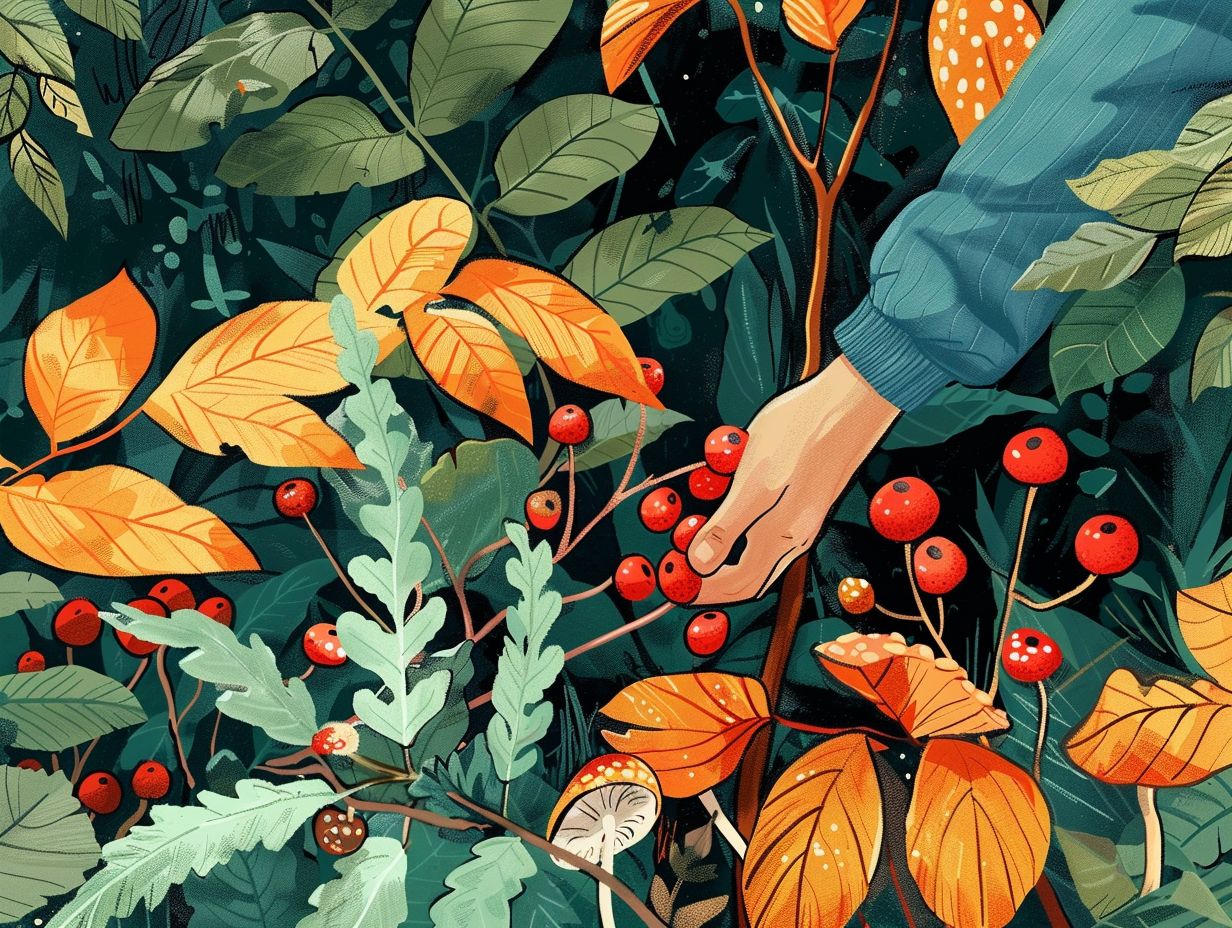
Ensuring safety during foraging activities whilst camping necessitates a keen awareness of toxic plants, avoidance of areas that may be contaminated with chemicals, and the implementation of practices to prevent exposure to harmful pathogens through the proper handling of water.
It is imperative for individuals to acquire knowledge on how to identify poisonous vegetation and to maintain ready access to a plant identification guide at all times.
Selecting foraging locations situated away from industrial zones and high-traffic roadways can aid in reducing the likelihood of contamination.
Thoroughly washing hands prior to handling any foraged food items is a critical measure in preventing foodborne illnesses.
Carrying a well-equipped first aid kit that includes antihistamines and possessing the ability to promptly address allergic reactions are essential components of being sufficiently prepared for unforeseen circumstances that may arise during foraging excursions.
Frequently Asked Questions
Is foraging while camping safe?
Yes, foraging while camping can be safe as long as you follow certain precautions. Make sure you always correctly identify plants before consuming them and avoid harvesting near roads, industrial areas, or areas with heavy pesticide use.
What are some common plants that can be foraged while camping?
Some common plants that can be foraged while camping include dandelions, wild berries, mushrooms, wild garlic, and wild greens like chickweed and plantain.
Can I forage for meat while camping?
While foraging for plants is relatively safe and easy, foraging for meat is not recommended for beginners. It requires advanced knowledge of hunting laws, animal tracking, and proper butchering techniques.
Are there any tools I should bring for foraging while camping?
Yes, there are a few tools that can make foraging while camping easier and more efficient. These include a field guide for plant identification, a knife for harvesting, and a basket or bag for collecting.
Can I forage while camping in any location?
It is important to always obtain permission from landowners or park officials before foraging while camping. Some areas may have restrictions or regulations on foraging, so it is best to check beforehand.

